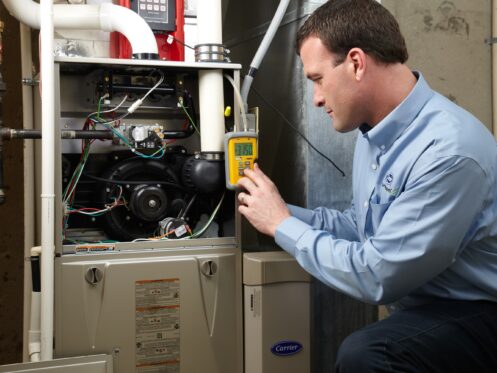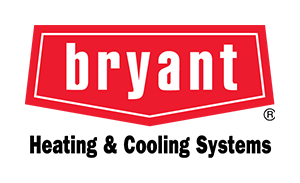Your heating system keeps your home warm, but it also burns fuel, and when that process doesn’t happen cleanly, carbon monoxide can slip into your home without a sound or smell. One of the best ways to spot a problem is through combustion analysis. Honest Home Services LLC, a trusted combustion analysis expert in Flower Mound, TX, uses this method to catch hidden heat exchanger problems before they turn into safety risks.
If you’ve never had this test done, now’s a good time to learn how it works and why it matters.
Why Your Heat Exchanger is Critical
Your furnace does more than just pump out warm air. It burns fuel to generate heat, and that process takes place inside the heat exchanger. The heat exchanger keeps the air you breathe separate from the combustion gases. As it heats up, a fan pushes clean air across its surface, and the warmed air flows into your ducts. The combustion gases, like carbon monoxide and nitrogen dioxide, exit through the flue.
That separation must stay intact. If the metal cracks or wears down, combustion gases can leak into the airflow that circulates through your home. You might not hear it or smell it, but a leak like that puts everyone at risk. A faulty heat exchanger doesn’t always shut the furnace off. It might run just fine while leaking gases into the air. That’s why relying on comfort alone doesn’t work.
The system can heat your home while still creating a serious problem. A faulty heat exchanger can lead to carbon monoxide poisoning, a potentially life-threatening condition. This is why regular heating maintenance, including furnace combustion analysis, is crucial for your safety.
How Carbon Monoxide Becomes a Silent Risk
Carbon monoxide comes from fuel that doesn’t burn completely. In a furnace, that could be natural gas or propane. If the fuel-to-air mixture is off or the flame burns too cool, the result is a higher concentration of carbon monoxide. The gas has no color or odor, and it moves with air like any other gas. If it leaks into your ductwork, it spreads quickly.
Even small amounts of carbon monoxide affect how you feel. You might get headaches or feel lightheaded without knowing why. It can mimic flu symptoms or general fatigue. In higher concentrations, it becomes dangerous fast. The real problem is that it builds up indoors when it has nowhere to go. If your heat exchanger has a leak, the furnace doesn’t ventilate properly, and that buildup starts every time the heat kicks on.
You need a carbon monoxide detector designed for gas detection, and even then, early signs of a problem can go unnoticed. That’s where combustion analysis comes in. It tests the combustion process directly and shows whether your furnace is producing safe exhaust or not.
What Combustion Analysis Measures and Why It Works
Combustion analysis is a comprehensive test that measures the gases that come out of your furnace during operation. A trained technician inserts a probe into the exhaust pipe and collects real-time data as the system runs. The tool reads levels of carbon monoxide, oxygen, and carbon dioxide. It also measures the temperature inside the flue and calculates combustion efficiency. Each of these measurements provides a crucial piece of information about your furnace’s performance and safety.
A high carbon monoxide reading points to incomplete combustion. That doesn’t always mean a cracked heat exchanger, but it tells you something’s wrong with the burn. Low oxygen levels can mean poor airflow or a clogged intake. Abnormal fuel temperatures might point to heat that’s not transferring properly from the exchanger to the air. And if carbon dioxide is too low, the fuel might not be mixing well.
Together, these numbers help a trained technician understand how the furnace works. More importantly, they reveal how safe it is. If your heat exchanger has a crack or pinhole leak, the combustion readings shift. The leak lets air into the combustion chamber or lets gas escape too early. Those changes show up in the test, even if the leak isn’t visible to the eye.
Why Visual Inspections Don’t Catch Everything
In some cases, a technician can look at the heat exchanger and detect a problem. A large crack or rust hole might show clearly. But most heat exchangers are hard to access. They sit behind sealed panels, and many units don’t allow a full visual inspection without removing major components. That’s not always practical during a regular service call.
Even when the exchanger is visible, small cracks can be nearly impossible to see without specific tools. And cracks don’t always stay open. When the metal is cold, it might look intact. But when the furnace heats up and the metal expands, that same area could split just enough to leak gas. A combustion analysis catches the effects of that leak during operation, not just when the unit is off.
Relying on sight alone leaves room for guesswork. Using combustion readings takes that guesswork out. It gives real numbers that reflect how the system behaves under load. That’s a more accurate way to detect problems that don’t show up clearly from the outside.
When to Ask for Combustion Testing
Combustion analysis isn’t just something to do when your furnace breaks. It’s part of proactive maintenance, a smart step to take even if your furnace seems to be running fine. If your furnace is over ten years old, it’s a smart test to run. Heat exchangers wear slowly, and problems often build gradually. You might not notice symptoms until they’ve been happening for months. But with this proactive approach, you can catch potential issues early and ensure the safety of your home.
If your carbon monoxide detectors go off, you should shut down your furnace immediately and request testing. But there are more subtle signs that also call for a closer look. If your furnace flames look yellow or flicker unevenly, the combustion may be off. If you smell burnt dust or metal when the heat runs, something inside might be overheating.
What Happens If the Test Finds a Leak
If combustion analysis shows a carbon monoxide leak tied to the heat exchanger, the furnace needs to be shut off. Continuing to run it puts your household at risk. The next step depends on the severity and age of the unit. In some cases, the heat exchanger can be replaced. However, with older furnaces, the cost of replacement often approaches the cost of a new unit. Many manufacturers no longer produce replacement parts for outdated models.
Your technician can help you understand what the readings mean and what your options are. The main priority is safety. If the leak is confirmed, running the heat isn’t safe. That might mean setting up alternate heat sources or scheduling a fast replacement. The goal isn’t just to restore heat. It’s to eliminate the risk of harmful gases entering your home.
If the readings point to early signs of combustion trouble without a confirmed leak, you can use that data to plan repairs. Cleaning burners, adjusting airflow, or fixing venting issues might bring levels back to normal. Either way, you leave the test with a clearer understanding of what your furnace is doing.
Learn More About Our Combustion Analysis Testing
Combustion analysis takes the guesswork out of diagnosing heat exchanger problems. It gives you clear data, not assumptions, and helps catch issues before they become dangerous. If you’re ready to have your furnace tested and your heat exchanger checked for carbon monoxide leaks, schedule a combustion analysis with the furnace service experts at Honest Home Services LLC today.
We also offer heat exchanger inspections, furnace repairs, and carbon monoxide detector installations to support a safer, more efficient heating system.





